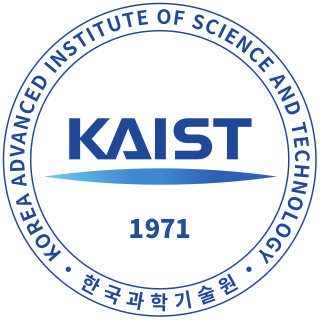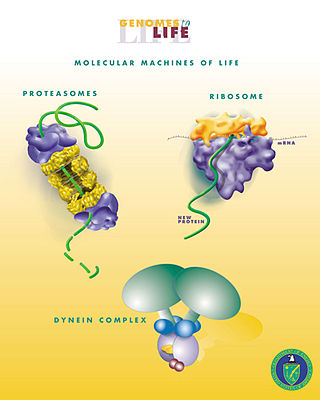
The Korea Advanced Institute of Science and Technology (KAIST) is a national research university located in Daedeok Innopolis, Daejeon, South Korea. KAIST was established by the Korean government in 1971 as the nation's first public, research-oriented science and engineering institution. KAIST is considered to be one of the most prestigious universities in the nation. KAIST has been internationally accredited in business education, and hosts the Secretariat of the Association of Asia-Pacific Business Schools (AAPBS). KAIST has 10,504 full-time students and 1,342 faculty researchers and had a total budget of US$765 million in 2013, of which US$459 million was from research contracts.

Mechanical engineering is the study of physical machines that may involve force and movement. It is an engineering branch that combines engineering physics and mathematics principles with materials science, to design, analyze, manufacture, and maintain mechanical systems. It is one of the oldest and broadest of the engineering branches.

Michigan Technological University is a public research university in Houghton, Michigan, founded in 1885 as the Michigan Mining School, the first post-secondary institution in the Upper Peninsula of Michigan.

The Technion – Israel Institute of Technology is a public research university located in Haifa, Israel. Established in 1912 under the dominion of the Ottoman Empire, the Technion is the oldest university in the country. The Technion is ranked as one of the top universities in both Israel and the Middle East, and in the world's top 100 universities in the 2022 Academic Ranking of World Universities.

Sheffield Hallam University (SHU) is a public research university in Sheffield, South Yorkshire, England. The university is based on two sites; the City Campus is located in the city centre near Sheffield railway station, while the Collegiate Crescent Campus is about two miles away in the Broomhall Estate off Ecclesall Road in south-west Sheffield. A third campus at Brent Cross Town in the London Borough of Barnet is expected to open for the 2025-26 academic year.
Engineering physics, or engineering science, refers to the study of the combined disciplines of physics, mathematics, chemistry, biology, and engineering, particularly computer, nuclear, electrical, electronic, aerospace, materials or mechanical engineering. By focusing on the scientific method as a rigorous basis, it seeks ways to apply, design, and develop new solutions in engineering.
Mechanical engineering technology is the application of engineering principles and technological developments for the creation of useful products and production machinery.

Biological engineering or bioengineering is the application of principles of biology and the tools of engineering to create usable, tangible, economically viable products. Biological engineering employs knowledge and expertise from a number of pure and applied sciences, such as mass and heat transfer, kinetics, biocatalysts, biomechanics, bioinformatics, separation and purification processes, bioreactor design, surface science, fluid mechanics, thermodynamics, and polymer science. It is used in the design of medical devices, diagnostic equipment, biocompatible materials, renewable energy, ecological engineering, agricultural engineering, process engineering and catalysis, and other areas that improve the living standards of societies.

Computational Engineering is an emerging discipline that deals with the development and application of computational models for engineering, known as Computational Engineering Models or CEM. Computational engineering uses computers to solve engineering design problems important to a variety of industries. At this time, various different approaches are summarized under the term Computational Engineering, including using computational geometry and virtual design for engineering tasks, often coupled with a simulation-driven approach In Computational Engineering, algorithms solve mathematical and logical models that describe engineering challenges, sometimes coupled with some aspect of AI, specifically Reinforcement Learning.

Thomas Joseph Robert Hughes is a Professor of Aerospace Engineering and Engineering Mechanics and currently holds the Computational and Applied Mathematics Chair (III) at the Oden Institute at The University of Texas at Austin. Hughes has been listed as an ISI Highly Cited Author in Engineering by the ISI Web of Knowledge, Thomson Scientific Company.

Indian Institute of Technology Patna is a public research university and technical institute located at Bihta near Patna, Bihar. It is recognized as an Institute of National Importance by the Government of India. It is one of the second generation IITs established by an Act of the Indian Parliament on August 6, 2008.

Dudley Brian Spalding, FRS FREng was Professor of Heat Transfer and Head of the Computational Fluid Dynamics Unit at Imperial College, London. He was one of the founders of computational fluid dynamics (CFD) and an internationally recognized contributor to the fields of heat transfer, fluid mechanics and combustion. He created the practice of CFD – its application to problems of interest to engineers. Most of today’s commercially available CFD software tools trace their origin to the work done by Spalding's group in the decade spanning the mid-60s and mid-70s. Spalding became a Fellow of the Royal Society and Fellow of the Royal Academy of Engineering.
The College of Engineering at Michigan State University (MSU) is made up of 9 departments with 168 faculty members, over 6,000 undergraduate students, 10 undergraduate B.S. degree programs and a wide spectrum of graduate programs in both M.S. and Ph.D. levels. Each department offers at least one degree program, however many include more than one degree, multi-disciplinary programs, certifications and specialties as well as other degree programs affiliated with other colleges at Michigan State University.

Gautam Buddha University ("GBU") is a university established by the Uttar Pradesh Gautam Buddha University Act 2002 and came into existence in 2008. It is approved by University Grants Commission (UGC) under section 12-B and accredited by National Assessment and Accreditation Council (NAAC) with B+ grade. It is located in Greater Noida, Gautam Buddha Nagar in Uttar Pradesh, India. It is one of Uttar Pradesh's state government universities which commenced its first academic session in the year 2008. The university campus is spread over 511 acres (207 ha) in Greater Noida and offers Bachelors, Masters and Doctoral degrees in engineering, Business Administration, Computer Applications, Biotechnology and Buddhist Studies and is mainly focused on research.

The Technion – Israel Institute of Technology is a leading technical university in Haifa, Israel, with a history dating back to the early 20th century.

Rajagiri School of Engineering & Technology (Autonomous) (RSET) is an educational institution located in Kochi, Kerala, India, offering engineering education and research. RSET is affiliated to APJ Abdul Kalam Technological University and approved by the All India Council for Technical Education (AICTE).

The Faculty of Engineering and Technology, Jamia Millia Islamia (JMIFET) was established in 1985 in New Delhi, India to provide engineering education. All courses of the faculty are approved by the All India Council for Technical Education. JMI FET is one of the top ranked engineering colleges in the country.
Industrial and production engineering (IPE) is an interdisciplinary engineering discipline that includes manufacturing technology, engineering sciences, management science, and optimization of complex processes, systems, or organizations. It is concerned with the understanding and application of engineering procedures in manufacturing processes and production methods. Industrial engineering dates back all the way to the industrial revolution, initiated in 1700s by Sir Adam Smith, Henry Ford, Eli Whitney, Frank Gilbreth and Lilian Gilbreth, Henry Gantt, F.W. Taylor, etc. After the 1970s, industrial and production engineering developed worldwide and started to widely use automation and robotics. Industrial and production engineering includes three areas: Mechanical engineering, industrial engineering, and management science.

Nedjib (Ned) Djilali is a Canadian engineering professor and researcher specializing in sustainable energy and thermofluid sciences. He holds the Canada Research Chair in Advanced Energy Systems Design and Computational Modelling at the University of Victoria. Djilali is a Highly Cited Researcher, and a fellow of both the Canadian Academy of Engineering (2010) and the Royal Society of Canada (2013).
Stephen John Haake is a British sports engineer. He is professor of sports engineering at Sheffield Hallam University, England and is founding director of the university's advanced wellbeing research centre.















